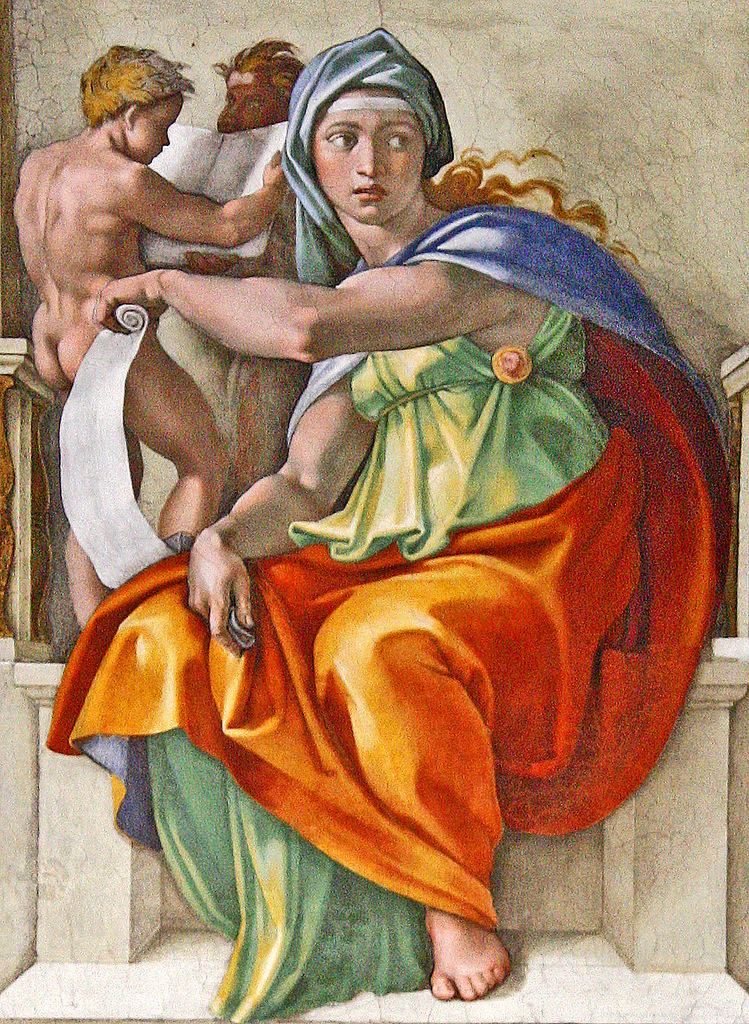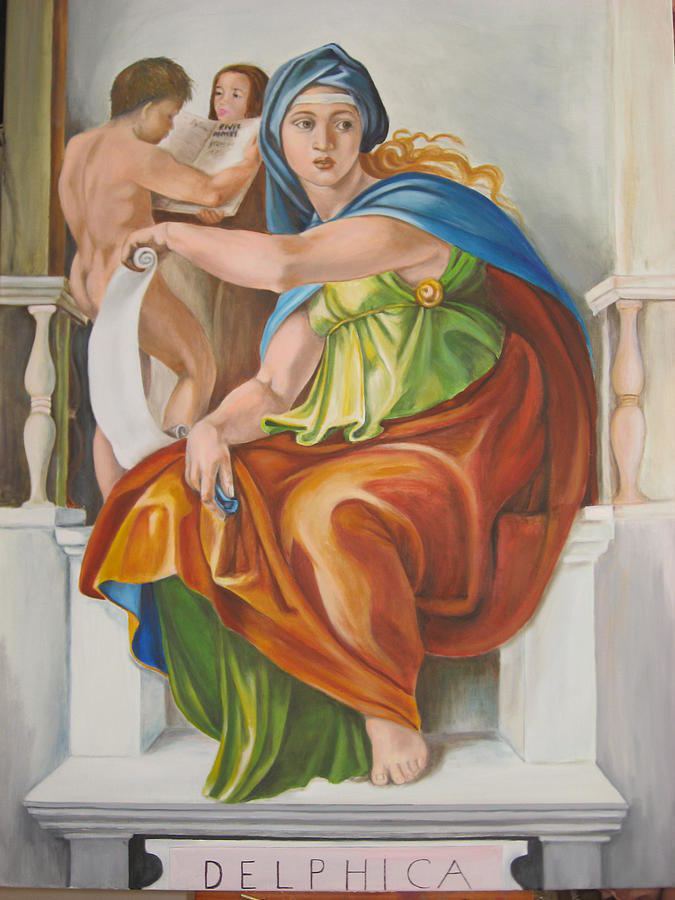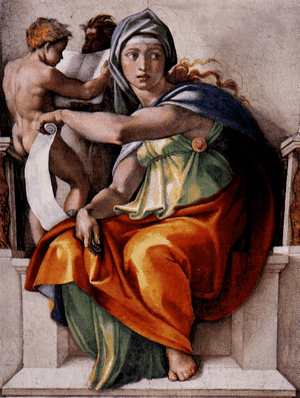 | ||
Similar Pythia, Castalia, Ceyx, Calydonian Boar, Thyestes | ||
The Delphic Sibyl was a woman from before the Trojan Wars (c. 11th century BC) mentioned by Pausanias writing in the 2nd century AD about stories he had heard locally. The Sibyl would have predated the real Pythia, the oracle and priestess of Apollo, originating from around the 8th century BC.

There were several prophetic women called Sibyls and male figures called Bakis in the Graeco-Roman world. The most famous Sibyl was located at Cumae and the most famous Bakis at Boeotia.

Pausanias claimed that the Sibyl was "born between man and goddess, daughter of sea monsters and an immortal nymph". He said that the Sibyl came from the Troad to Delphi before the Trojan War, "in wrath with her brother Apollo", lingered for a time at Samos, visited Claros and Delos, and died in the Troad, after surviving nine generations of men. After her death, it was said that she became a wandering voice that still brought to the ears of men tidings of the future wrapped in dark riddles.

Timelapse video of fran ois pelletier drawing michelangelo s delphic sibyl




